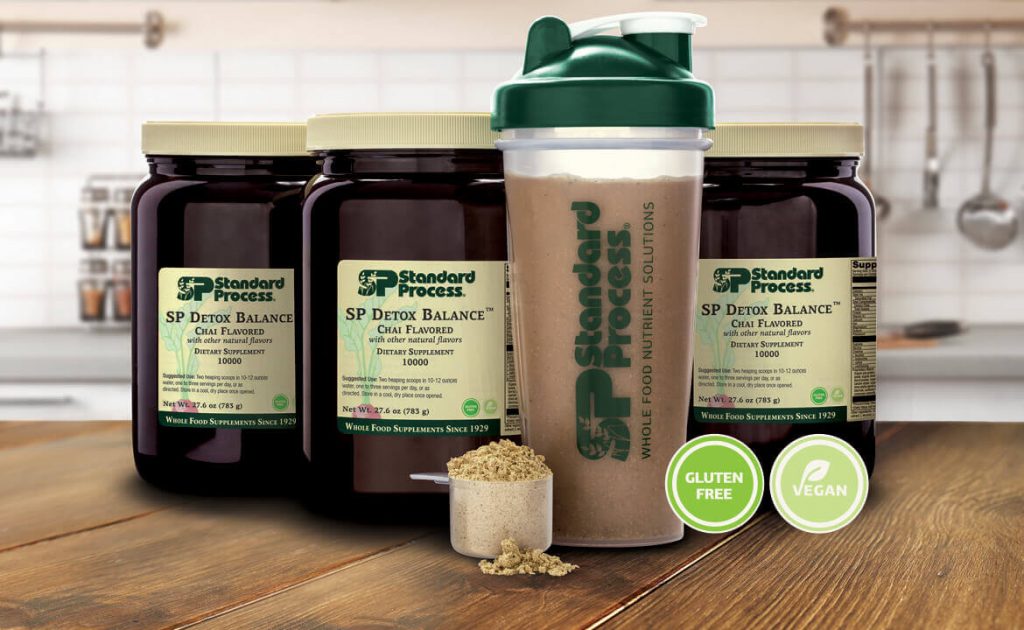We are exposed to toxins every single day. We eat, drink, and breathe environmental toxins and we also make toxins that a healthy body would be able to excrete. But what happens if we get too many toxins over time? If the liver, kidneys, and lymph can’t keep up with the toxic load the body has devised a storage plan for that extra trash and that is putting it into your fat!
Ever wonder why it’s so easy to put weight on, but so difficult to take it off? Well our detox pathways have a lot to do with that. If there’s no safe way for the body to eliminate toxins stored in the fat, because we have a dirty liver (or worse a fatty liver!) or our kidneys are not excreting efficiently, the brain says “NO!” to fat loss.
How else do these toxins affect us? They can contribute to:
- Fatigue or difficulty sleeping
- Indigestion or GI upset
- Food cravings or weight gain
- Reduced mental clarity
- Low libido
- Skin issues
- Joint discomfort

Statistics show that chemicals are unavoidable:
- 80,000 chemicals registered for use in the US
- 800,000,000 pounds of herbicides used per year in the US
- 167 industrial chemicals found in adults with no employment related exposure
The typical American diet favors processed foods that are high in bad fats (hydrogenated or GMO), refined sugar, and salt. Processed foods also often contain pesticides and artificial ingredients that can contribute to toxin buildup.
Some other daily exposures you may have overlooked are:
- Tap water – city water is treated and chlorinated, however studies show that Rx medication cannot be filtered out, along with many other chemicals.
- Solution: Get a water filtered
- Toothpaste – fluoride is a known toxin and while it does harden teeth and bone, it also takes the “parking spots” in our body where iodine should be. Iodine is essential for thyroid and breast health and studies how nearly 80% of Americans are deficient in this vital mineral.
- Solution: Use a fluoride free toothpaste and tooth polish at the dentist.
- Aluminum cookware – cookware is an easy way to absorb chemicals and heavy metals into your body. The food picks up the toxins and then you ingest it.
- Solution: Inspect your cookware regularly and replace with ceramic or stainless steel for a safer option.
- Body care products – antiperspirants contain aluminum as an active ingredient to prevent sweating. How logical is that? Aluminum also crosses the blood-brain barrier (not good!). Other beauty and body care products often also contain synthetic chemicals to make them creamy, foamy, scented, etc. which are then absorbed through the skin and into the body.
- Solution: buy aluminum free deodorant and all natural or organic body care products.
But how do we support our body’s detox pathways?
We are fortunate in that detoxification is a natural process that our body already does, but how can we up-regulate it to handle the toxic overload? First, we need to change the fat-soluble toxins (the ones that get stored in your fat) into water soluble toxins so we can remove them. This is Phase I and requires certain nutrients and antioxidants. Phase II neutralizes these toxins, using amino acids. Finally Phase III includes fiber and nutrients to aid in the elimination of these toxins from the body.
SP Detox Balance is a new product, developed by Standard Process, to combine phtyonutrients, protein, and fiber for the purpose of unlocking, neutralizing, and eliminating stored toxins from the body.

One to two delicious SP Detox shakes per day for 10-28 days is the perfect way to reboot your detox pathways and regain your health. In conjunction with drinking plenty of water, exercise, and wholesome meals you will be on your way to removing months, even years of stored toxins from your body!
Call our office to set up an evaluation appointment to see if SP Detox Balance is right for you!
CONTACT:
Dr. Virginia S. Irby D.C.,DABCO, ACN
Cascade Chiropractic
2371 Iron Point Rd. Ste. 130
Folsom, CA 95630
916-844-2800
References:
Modulation of Metabolic Detoxification Pathways Using Food-Derived Components: A Scientific Review with Clinical Application, by Romilly E. Hodges and Deanna M. Minch
Biomonitoring of Industrial Pollutants: Health and Policy Implications of the Chemical Body Burden, by Joseph W. Thornton, Michael McCally, and Jane Houlihan
Fast Food Fever: Reviewing the Impacts of the Western Diet on Immunity, by Ian A Myles
National Toxicology Program, US Department of Health and Human Services
Pesticides Industry Sales and Usage 2006 and 2007 Market Estimates, US EPA compiled by Arthur Grube, David Donaldson, Timothy Kiely, and La Wu
Concerns Over Glyphosate-Based Herbicides and Risks Associated with Exposures: a Consensus Statement, by Michael N Antoniou et al.
